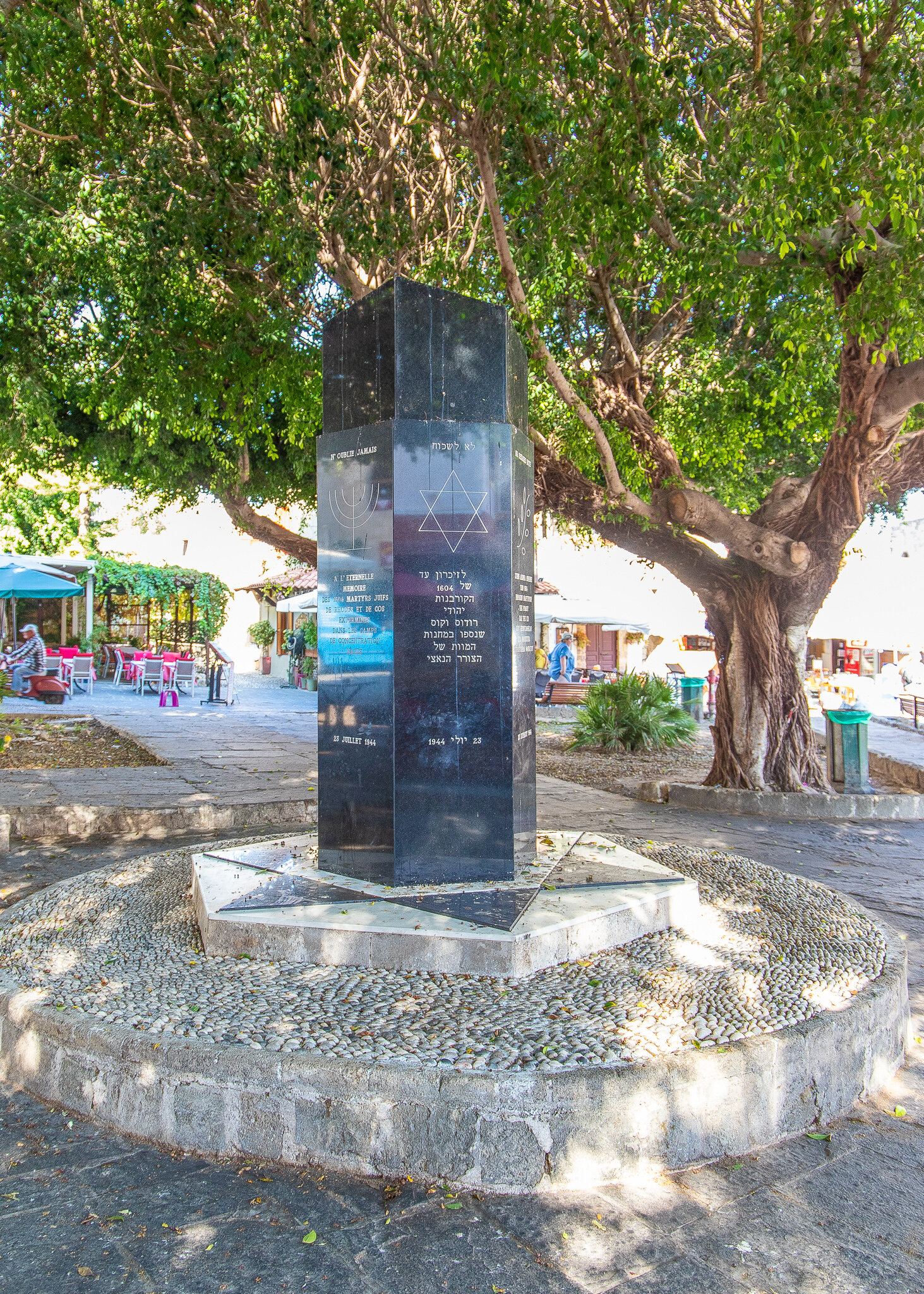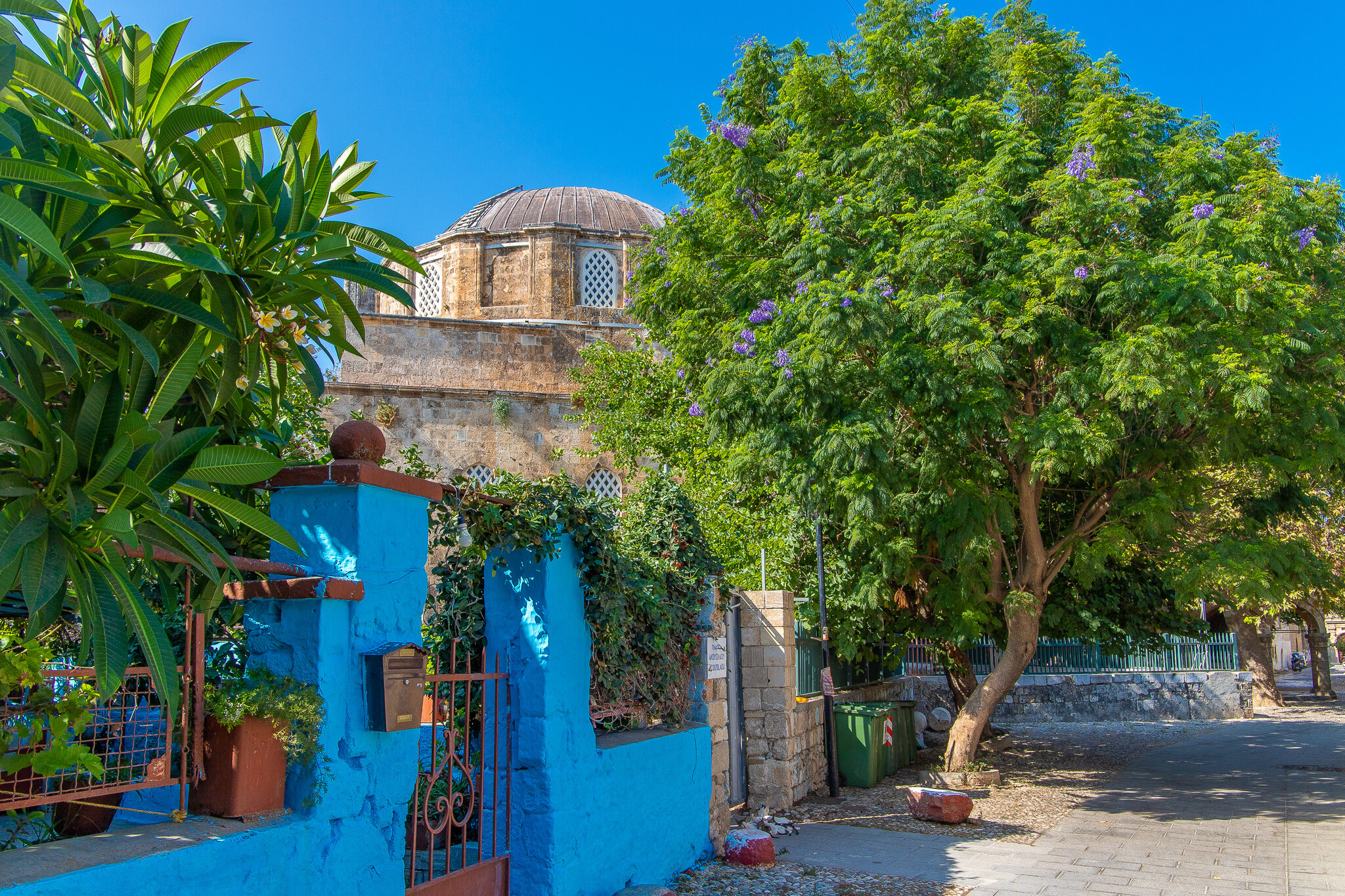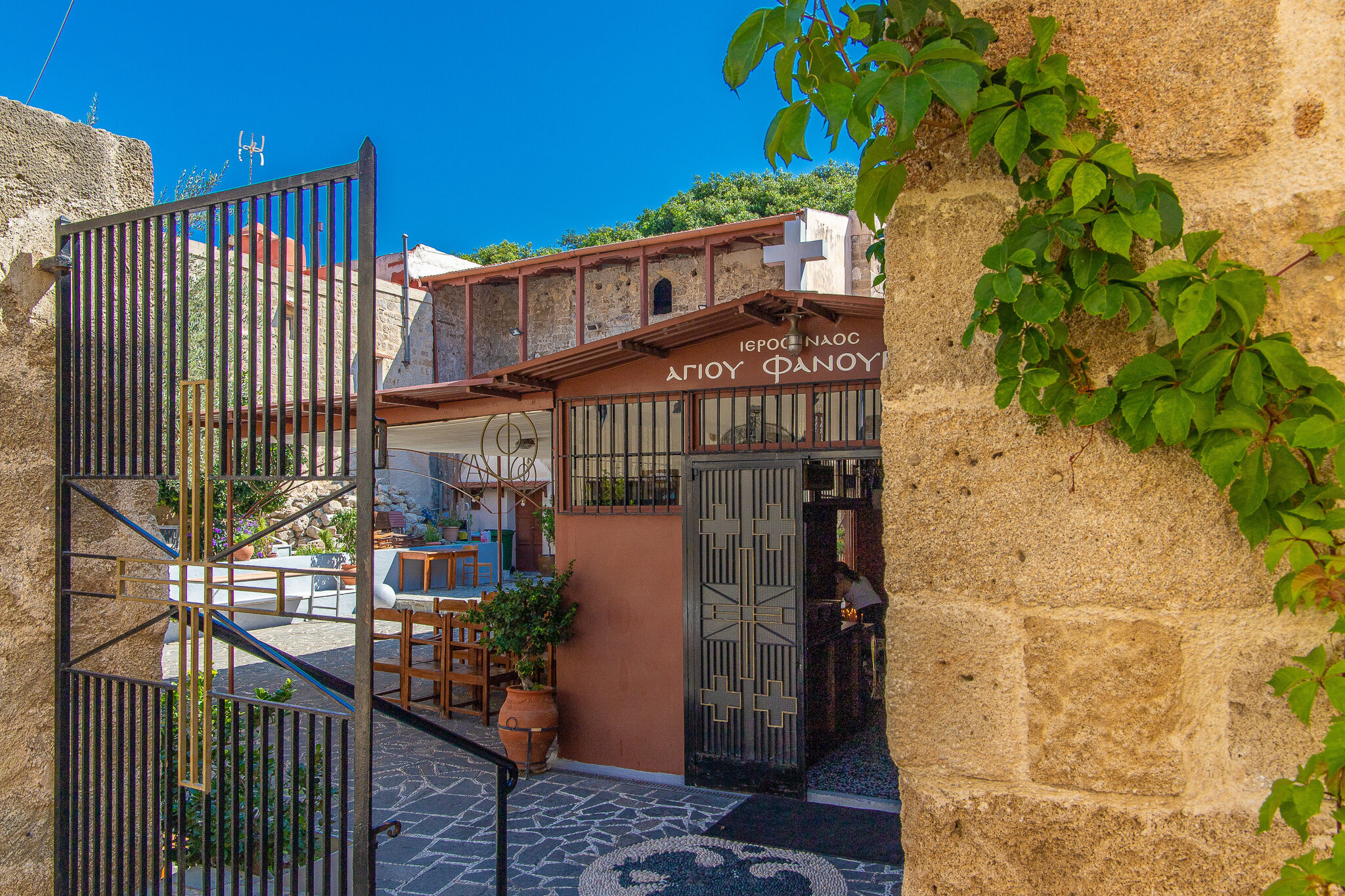Close to 2,300 years ago the Colossus of Rhodes was built to celebrate the island’s victory over invading forces sent by Antigonus the One Eyed, who ruled large parts of modern day Turkey, Greece, Cyprus and the Levant. Standing 33 metres high, the statue of the Greek sun-god Helios stood at, not astride as it is often depicted, the entrance to Rhodes Harbour. The tallest statue in the world at the time, it was tragically destroyed only 50 years after being erected in an earthquake in 226 BC.
Whilst there’s nothing that grand to see in Rhodes today, there are still a ton of other magnificent structures just waiting to be discovered. To help make sense of what is on offer, I found it easiest to classify them in terms of the four distinct historical periods under which they were built.
The earliest period, dating back to between 332 BC and 164 BC, is the Hellenistic Period, of which only the foritification walls and a few other ruins remain. The second is from the Byzantine era (330 AD to 650 AD), which left behind ruined towers of an early Byzantine castle, fortification works and a small number of churches.
What most attracts visitors to the island today, however, is the third period belonging to the era of The Knights Hospitaller. Having originally been driven out from Jerusalem during the Crusades, the Knights spent 18 years in Cyprus before, depending on which account you believe, laying seige to Rhodes or purchasing it from the Genoese. From 1309 AD and for more than 200 years afterwards, the Knights had their own sovereign state and built the amazing medieval complex that now comprises most of the the UNESCO World Heritage Old Town of Rhodes.
The final period belongs to that of the Ottoman Empire who, under Sultan Suleiman, defeated the Knights in their second conquest. With 400 ships and more than 180,000 men, for six months the Ottomans blasted the defending force of 7,000 men, of which 700 were Knights Hospitallers of Saint John, into submission. Under the generous terms of surrender, the remaining knights, soldiers and civilians who wished to leave were provided with safe passage to the island of Crete and eventually from there Sicily and Malta (in 1530 AD), from where they started yet another chapter in their fascinating history. Within Rhodes itself, the Ottoman period has provided us with a hammam, library, ruins of an old Muslim school and fourteen mosques within the old town walls.
Over six days we hunted down and visited about as many sights as we could whilst keeping sane. Then came the harder task of trying to put them together in one mega tour that might, just might, conceivably be possible to complete in one day. More advisable would be split them over a couple of days or even longer so as to be able to saviour the history as well as appreciate them at different parts of the day and preferably without the crowds. So, enjoy, as most certainly did.
Number 1 - Church of the Virgin of the Burgh
The tour begins at the early 14th century AD Church of the Virgin of the Burgh which during the Knights era comprised six chapels and seven vaulted tombs. The ruins that are left today stand opposite the Virgin Mary’s/St Mary/Panaghia Gate (take your pick), which is one of the closest entrances to the Old Town if you’ve arrived by ferry or cruise ship.
Also known as Saint Mary of the Burgh or Panagia tou Bourgou, the church is completely open to the elements as well as allowing all and sundry to clambor over and through it. The name of the church is attributed to where the church stood, which was to the east of the Castle, in an area occupied by commoners and merchants in the Burgh or borough as it would be called today.
Number 2 - The Square of the Jewish Martyrs
Having kicked off the tour, with your back to Virgin Mary’s Gate turn right down Pindarou Street heading towards the centre of the Old Jewish Quarter and the Square of the Jewish Martyrs (Evreon Martyron Square). In the square an extremely sobering Holocaust Memorial pays tribute to the 1,604 Jews of Rhodes that were sent to die at Auschwitz.
On the other side of the square, which also is known as Sea Horses Square for the fountain that is situated there, Aristoleous Street leads you to the next stop at Hippokratous Square.
Number 3 - Hippokratous Square
Hipplkratous Square or Ippokratous Square is the main square of Rhodes Town and an extremely popular place to grab a bite to eat or something to drink in one of the many cafes and bars. An ornamental fountain and stone staircase dominate the square as well as the 14th century AD Castellania (Kastellania) which you’ll pass before hitting the square proper. Originally the Castellania is believed to have served as the Knights’ Courts and a gaol and over the course of the next 500 years or so it has also been a mosque (the Bedesten Mosque) during the Ottoman period and a University (the University of Dante Alighieri) when under Italian rule in the early 20th century AD. Today, it serves as the Rhodes Municipal Library and the Rhodes Department of the General State Archives.
Hippokratous Square with Marine Gate in the background
Number 4 - The Marine Gate
Just past Hippocratous Square is what I think is the most impressive of the Old Town’s eleven gates, the Marine Gate. Also known as the Sea Gate or Kolona Gate, it was erected by Grand Master Pierre d’Aubusson in 1478 and is best seen by heading out the gate to view from outside the walls. While this was the main entrance to the town from the harbour, the defensive towers were more decorative than practical, as water came right up to the walls, thus preventing the likelihood of any attack from this side.
If you look above the entrance you can’t to notice a relief which depicts the Virgin Mary and Saints John and Peter.
If you go back through the gates and turn left you’ll end up back at Hippocratous Square from which this time you can head up the lovely Pythagora (Pithagora) Street (our accommodation was up the street here). The third street on the right just past Kelari Sifonios is Egeos Street which after 10 or so metres you then veer right onto Sofokleous Street and the pretty setting for the Ibrahim Pasha Mosque.
Number 5 - Ibrahim Pasha Mosque
Located at Sofokleous Square, the Ibrahim Pasha Mosque (Ibrahim Pasha Camii) has an extremely visible minaret which is worth the visit alone. Built in 1540 AD, by order of Sultan Suleiman, this mosque is possibly the only operational mosque within Rhodes Old Town today.
As you continue down Plotonos Street you’ll find the Bazzar Supermarket on your right, after which you’ll reach an open expanse of ruins at what is Athinas Square.
Number 6- Ruins of the Archangel Michael Church
In the square the ruins of the early Christian Byzantine Church of Archangel Michael (Ekklisia Agios Michail) are impossible to miss. While there’s not a lot to see, the backdrop provided by other churches and mosques makes it a nice place to stop when getting groceries at the aforementioned supermarket or while picking up your laundry right alongside.
If you keep going round to the left on Platonos Street you will reach the small Greek Orthodox Saint Spyridon Church.
Number 7 - Agios Spyridon Church
Built in the 13th century AD, this is another church that during the Ottoman era was converted into a mosque before reverting back to being a church again. Closed when we visited, it is supposed to be open for visitors, so if the opportunity presents itself, take it and have a gander inside.
You’ll now need to backtrack to Aristofaous Street from where you turn right before reaching Akousilaou Street and one of the most historically significant mosques in the Old Town.
Number 8 - Recep Pasha Mosque
The influential bey and later vizier of Rhodes, Recep Pasha (also known as Rejep Pasa or Retzep Pasa), ordered construction of what used to be a stunning mosque in 1588 from the remains of destroyed churches. Bearing his name, you can still see its fading beauty amongst within the complex that contains minarets, mosaics, a fountain and his tomb.
There are much needed plans to restore the mosque to something approaching its past glory, however a lack of funding continues to jeopardies its long term future. Here’s hoping that money can be found somewhere from within the vast European Union budget in the future.
Once finished viewing the mosque complex, do a U-Turn and head back down Akousilaou Street towards Fanourious Street (Agios Fanouriou).
Number 9 - Agios Faourious Church (Ekklisia Agios Fanourios)
There are a couple of entrances to the church, the first of which is on Akousilaou Street.
The other entrance is on Fanouriou Street.
It’s worth entering what is the very unassuming building in order to view the associated paintings and iconography.
The church was restored during the 13th century on the site where the icon of St. Fanourios were found in 64 AD. There’s a fascinating back story behind this which is detailed here and to this day there still is a lot unknown, including the Saint’s own background. What is known though, is that after the collapse of the Ottoman Empire, the chapel was reclaimed by the Greek Orthodox Church and when being restored frescoes were revealed from beneath the whitewashed walls, which are now visible to pilgrims and visitors.
So ends part 1 of the mega tour - if you’re still hanging in there part 2 follows.




















